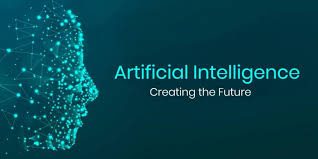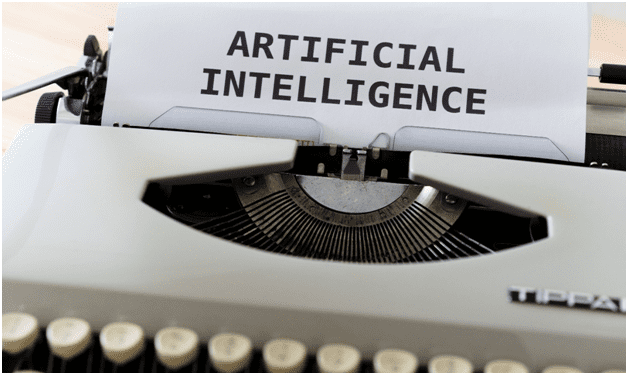AI IN REAL BUSINESS WORLD
AI stands for Artificial Intelligence.
Artificial intelligence is the simulation of human intelligence processes by a computer system.
How AI IS USED IN REAL BUSINESSES
Artificial intelligence(AI) approaches and concept less than a decade. AI is the branch of computer science that aims to answer turnings question affirmative. It is the endeavor to simulate human intelligence in machines.
When people think AI, they often think big such as curing cancer or solving climatic change everybody is dreaming up the biggest problem possible and attempting to solve them with AI. JUST 20% of surveyed executives use AI related technologies in their business.
With the right business case and the right data, AI can deliver powerful time & cost savings as well as valuable insights you can use to improve your business.
Each business problem will ask for a specific method with artificial intelligence with easy and deep learning techniques headlining today’s news & commercial applications being powered by ever more complex models.
An organization may be tempted to try to solve their cases with state-of-the-art AI models.
However, whether you should use such complex method are likely to benefit more from simpler approaches depends on a variety of factor.
The expansive goal of artificial intelligence has given rise to many question and debate, so much so, that no singular definition of the field is universally accepted…

Is AI Really intelligent ?
Even though the above-mentioned capabilities are mind-blowing and specially a hundred times better than humans. Human could perform on these task, not many people would call the algorithms actually intelligent.
WHERE IS AI USED:Artificial intelligence
AI, let’s take an example, it can easily handle many customer requests: it can divert customer calls not just to available workers but to those best suitable to handle te specific needs . Many retailers are using AI for intelligent stored design, they also optimize product selection and in store activities monitoring.
AI in Education !
AI in education is more than science fiction .one study found that 34hours on Duolingo’s app are equivalent to a full university semester of language education as with many other AI domains China has already leapt to the font of the pack in advancing AI -centered education.
REMARK: china is investing heavily in AI for education.
AI adoption in education will explode to reach global expenditure of $6B by 2025.much of the growth will come from China followed by U.S.A.
Importance of AI
Ai is actually the need of the hour. Its important that all student should start giving these diagnostic test and understand their specific needs and learning style so that they can enjoy their journey.
Why is AI important ?
AI is very important because it can give enterprises insight into their operations & they may not have been aware of previously. Because in some cases, AI can perform a task better than humans very well. Today, largest and most successfully enterprises have used AI to improve their operations and gain advantage on their competitors.
ADVANTAGES OF AI.

DISADVANTAGES OF AI.
- Everybody can’t effort it.
- Requires deep technical experts.
- Limited supply of qualified workers to build AI tools.
- Lack of ability to generalize from one task to another.
TYPES OF AI.
- Reactive machines : in this AI system, have no memory and are task specified. An example is deep blue, the IBM chess program that beat Garry Kasparov in the 1990s. Deep blue can identify the piece on the chess board.
- Limited memory : this AI system have memory, so they can use experience
- Theory of mind: it is a psychology term. When applied to AI, it means that the system would have the social intelligence to understand emotions.
- Self awareness: in this AI system have a sense of self which gives them consciousness. Machine with self awareness understand their own current state.
This is the information about Artificial intelligence(AI) in business world.
As per 2020’s McKinsey Worldwide Study on man-made brainpower (computer based intelligence), in 2020 over half of organizations have taken on artificial intelligence in no less than one specialty unit or capability, so we witness the rise of new artificial intelligence patterns. Lockdowns brought about a monstrous flood of online movement and an escalated simulated intelligence reception in business, schooling, organization, social connection, and so on.
1. Artificial intelligence for Security and Reconnaissance
Artificial intelligence procedures have proactively been applied to confront acknowledgment, voice distinguishing proof, and video investigation. These strategies structure the best combo for observation. Thus, in 2021, we can predict the serious double-dealing of artificial intelligence in video observation.
Simulated intelligence in video observation can distinguish dubious movement by zeroing in on unusual ways of behaving, not faces. Such computer based intelligence driven video arrangements could be likewise helpful for planned operations, retail, and assembling. Another specialty that gives promising viewpoints to the man-made intelligence application is voice acknowledgment. Advances connected with voice acknowledgment can decide the personality. By character, we mean the age of an individual, orientation, and profound state. One of the most significant advancements for security is biometric face acknowledgment.
2. Artificial intelligence continuously video handling
The test for handling ongoing video transfers is taking care of information pipelines. To execute a man-made intelligence based approach in live video handling, we really want a pre-prepared brain network model, a cloud framework, and a product layer for applying client situations. Processes parallelization is accomplished through record parting or utilizing a pipeline approach. This pipeline design is the most ideal decision since it doesn’t diminish a model’s precision and considers utilization of a simulated intelligence calculation to handle video continuously with no intricacies.
3. Generative simulated intelligence for content creation and chatbots
At the core of the text age stands Normal Language Handling (NLP). Consolidating NLP and computer based intelligence devices permits the making of chatbots. As per Business Insider, the chatbot market is supposed to arrive at USD 9.4 billion out of 2024, so we should underscore the manners in which organizations benefit from artificial intelligence driven chatbots execution.
Another model is NLP text age that can be utilized in business applications. A NLP-based Question Age framework introduced in the video underneath is utilized in a solid verification process.
4. Simulated intelligence driven QA and assessment
Organizations began to contribute both computational and monetary assets to create сomputer vision frameworks at a quicker rate. Robotized assessment in assembling suggests the examination of items concerning their consistence with quality norms. The philosophy is additionally applied to hardware observing.
A couple of purpose instances of man-made intelligence review are distinguishing imperfections of items on the sequential construction system, recognizing deformities of mechanical and vehicle body parts, stuff screening and airplane support, investigations of thermal energy plants.
5. Game-changing artificial intelligence leap forwards in medical services
Researchers use artificial intelligence models and PC vision calculations in the battle against Coronavirus, including regions like pandemic identification, immunization improvement, drug disclosure, warm screening, facial acknowledgment with veils, and dissecting CT examines. Additionally, simulated intelligence assists with creating immunizations by distinguishing urgent parts that make them proficient. Computer based intelligence driven arrangements might be applied as a productive device in The Web of Clinical Things and for taking care of privacy issues well defined for the medical services industry.
Get all your business need here only | Top Offshoring Service provider. (24x7offshoring.com)
here is a brief overview of the history of artificial intelligence:
- The early years: The history of artificial intelligence can be traced back to the early 1950s, when researchers began to explore the possibility of creating machines that could think like humans. One of the first major breakthroughs in AI came in 1956, when John McCarthy organized the Dartmouth Summer Research Project on Artificial Intelligence. This conference brought together some of the leading researchers in the field and helped to launch the field of AI as a legitimate area of study.early years of artificial intelligence
- The 1960s and 1970s: The 1960s and 1970s saw a period of rapid growth in the field of AI. Researchers made significant progress in developing new AI techniques, such as machine learning and expert systems. However, this period also saw some setbacks, as AI researchers struggled to create AI systems that could perform as well as humans in real-world tasks.1960s and 1970s of artificial intelligence
- The 1980s and 1990s: The 1980s and 1990s saw a renewed interest in AI, as researchers began to develop new AI techniques that were more powerful and efficient. This period also saw the development of some of the first commercial AI applications, such as expert systems and natural language processing.1980s and 1990s of artificial intelligence
- The 2000s to present: The 2000s to present have seen an explosion of interest in AI, as researchers have made significant progress in developing new AI techniques and applications. This period has seen the development of some of the most impressive AI systems to date, such as self-driving cars, virtual assistants, and large language models.2000s to present of artificial intelligence
Today, AI is a rapidly growing field with the potential to revolutionize many aspects of our lives. AI systems are already being used in a wide variety of applications, from healthcare to transportation to customer service. As AI technology continues to develop, we can expect to see even more innovative and groundbreaking applications in the years to come.
Here are some of the key milestones in the history of AI:
- 1950: Alan Turing publishes his paper, “Computing Machinery and Intelligence,” which introduces the Turing test, a test of a machine’s ability to exhibit intelligent behavior equivalent to, or indistinguishable from, that of a human.
- 1956: John McCarthy organizes the Dartmouth Summer Research Project on Artificial Intelligence, which is considered to be the founding event of the field of AI.
- 1957: Marvin Minsky and Seymour Papert publish their book, “Perceptrons,” which introduces the perceptron, a simple neural network that can learn to classify patterns.
- 1965: Allen Newell, Herbert Simon, and Cliff Shaw develop the Logic Theorist, a computer program that can prove mathematical theorems.
- 1972: Joseph Weizenbaum develops ELIZA, a computer program that simulates a Rogerian psychotherapist.
- 1981: The first expert system, MYCIN, is developed for use in medical diagnosis.
- 1997: IBM’s Deep Blue chess program defeats world champion Garry Kasparov.
- 2011: Google’s self-driving car program achieves its first autonomous mile.
- 2016: OpenAI’s AlphaGo program defeats world champion Lee Sedol at the game of Go.
- 2022: Google’s LaMDA language model is able to generate human-quality text.
The history of AI is a long and fascinating one, and it is clear that the field is still in its early stages of development. However, the progress that has been made so far is truly remarkable, and it is exciting to think about what the future holds for AI.
